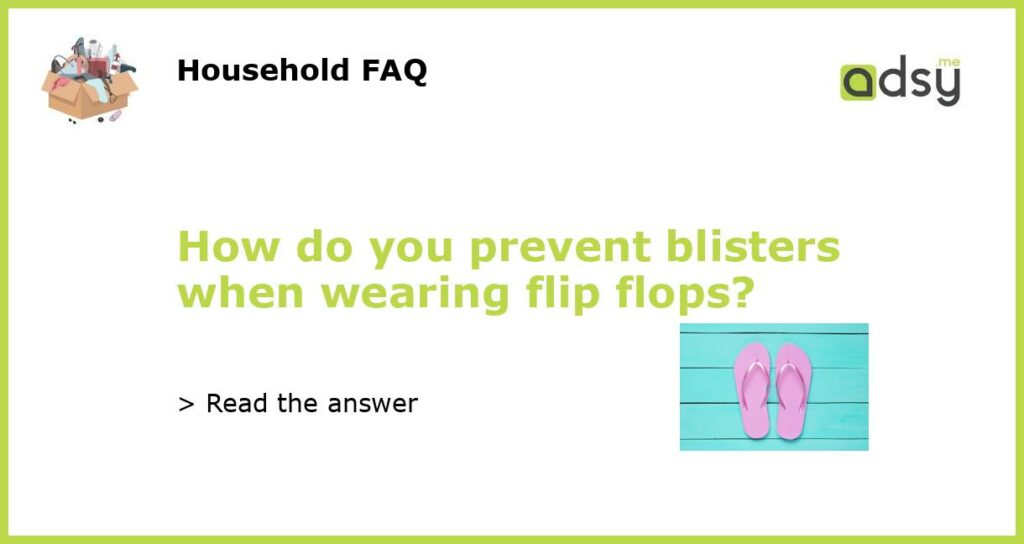Understanding Blisters and what causes them
Blisters form when your skin rubs against something repeatedly or is exposed to heat or chemicals. The friction causes the skin to separate from underlying tissues and a small pocket of fluid emerges. Blisters are common on areas of your feet which are in constant friction, such as the toes or the heel. Wearing flip flops can make your feet more vulnerable to blisters since they don’t hold your feet in place, and your feet may rub against the flip flops if you don’t have a good fit. To prevent blisters, it’s important to be aware of the common causes and how to avoid them.
Choosing the Right Flip Flops
One of the biggest mistakes people make when shopping for flip flops is choosing the wrong size. Flip flops should fit snugly but not too tightly. When your foot slides too far forward or backwards, your toes may end up rubbing against the front or back of the flip flop, leading to blisters. It’s important to test different sizes and styles to see what fits you best. Instead of opting for cheap options, invest in quality brands that offer comfort and durability.
Preventing Blisters with Socks
If you’re planning on wearing flip flops for an extended period, consider wearing socks to reduce friction. Not just any socks will do, however. Look for socks specifically designed for use with flip flops. These socks have an open-toe design that prevents your toes from rubbing against your flip flops. Additionally, socks can help absorb sweat and moisture, which can lead to blisters. Both cotton and synthetic materials can do the trick, so choose the one that best suits your needs.
Breaking your Flip Flops In
Before you strap on a new pair of flip flops, it’s important to break them in. This means wearing them around the house or for short periods to help them adjust to the shape of your foot. New flip flops may require some time to get used to, so don’t expect to be able to wear them for long periods right away. By breaking them in gradually, you’ll be able to adjust your feet to the flip flops, and the flip flops to your feet, which can help prevent blisters from forming.
Other Tips to Avoid Blisters
In addition to the tips mentioned above, there are other things you can do to prevent blisters when wearing flip flops. Use moisturizer to keep your feet hydrated, which can help reduce friction between your skin and the flip flop. Avoid walking long distances in flip flops, since this puts more strain on your feet and increases the likelihood of blisters. Finally, keep your feet clean and dry to prevent the growth of bacteria and fungi, which can contribute to the formation of blisters.






